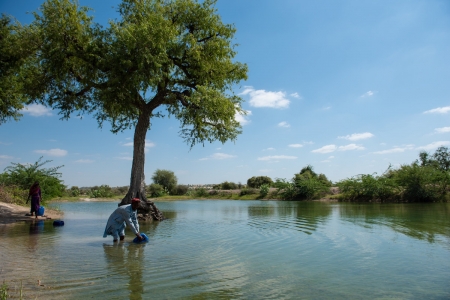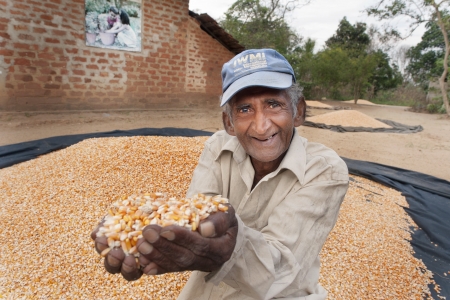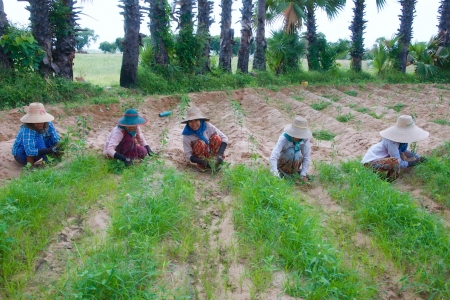Among other social identities, gender is one of the most critical determinants of how an individual’s relationship is shaped with the rest of society. In the 1990s, gender equality began to make its way onto international agendas governing one of the most important resources for human survival - water. This was a formidable step forward in acknowledging gender as a legitimate policy issue in the water sector. It recognized that although water is often viewed as a guaranteed human right necessary for survival, access and availability is often unequally distributed based on how an individual identifies themselves.
Although strides have been made across the globe to increase gender equality in water access, these efforts have not profoundly challenged existing gendered patterns of water management in South Asia. A reason for this is that the processes and factors that create gaps between policy intentions and actionable outcomes are complicated and intertwined. Water injustices attributed to gender often intersect with other social markers such as caste, ethnicity, class or age. Such crossovers cause small changes in gender governance to have massive cascades across social systems that are frequently pushed back by slow moving administrative bodies.
Nepal is an interesting case study when analyzing gender equality in water management, as national irrigation and drinking water policies are relatively progressive in terms of gender and social inclusion. Efforts to address gender equality in water resource management began in the country in the early 2000s, under the Ninth Five-year Plan (1997–2000). As a result of concerted efforts building on this work, gender mainstreaming has resulted in a gender and social inclusion (GESI) unit in most ministries and line departments. In fact, Nepal established a legal quota for women’s participation in official community water management groups, like Water User Associations (WUAs). This quota is of particular interest as it is the country's most central policy measure on gender equality, cutting across the irrigation, water, sanitation and hygiene (WASH) sectors.
Is adding women’s quotas enough?
Similar to other international initiatives surrounding gender in water governance, the implementation of the promising quota has unfortunately led to disappointing outcomes – women’s participation in leadership positions has been mostly tokenistic with little influence on decision making. And to some extent it has led to patronage positions which has failed to work for the overall welfare of women. All published case studies on women’s participation in WUAs and observations of water professionals point to limited impact. Even when the quota on the list of executive committee members is met, women’s participation is often considered more symbolic than active. More importantly, evidence from the International Water Management Institute (IWMI) indicates that the legal quotas have not empowered women in decision-making or achieved their goal of enhancing gender equality.
Although the quotas mark an important step towards gender equality in Nepal’s water management, what IWMI’s findings indicate is that a technocratic application of quotas alone is unlikely to trigger any remarkable change. To increase the impact of governmental management measures, we need to move beyond the application of quotas by identifying, questioning and challenging current practices, attitudes and organizational culture in water bureaucracies. For any meaningful change, quotas must be accompanied by structural transformation. Fortunately, new drivers for more gender-equal water management and governance have recently emerged.
Change is multi-layered
In their recent paper, Unravelling gendered practices in the public water sector in Nepal, IWMI recommends that policy discourses, institutions and professional cultures need to be simultaneously addressed in order to affect change in the most thorough way possible. In the broadest sense, this means extending current framings of water as a resource, to water as a symbol of identity, power and citizenship. This will move the water sector away from the masculinized engineering approach that currently dominates, to a more inclusive and effective management ideology. The sector is already advancing in this direction, as male out-migration increases visibility of the gendered nature of water access and management with non-gender experts. Additionally, there has been a greater institutionalization of gender in public organizations, with the recent creation of GESI units in government agencies and an increase of female staff in the public irrigation sector.
Building on this reformed social representation of water, gender equality in Nepal’s water management systems requires a greater diversity of voices on water needs and experiences to move beyond simplistic representations of ‘the Nepali woman’. From an institutional point of view, this implies ensuring gender, caste and class diversity at all levels of policy-making and implementation as well as allocating adequate financial and human resources for more socially just water management. With respect to professional culture, it is important to institutionalize values that promote positive masculinities of empathy and respect within organizations. Opening spaces for male and female staff to discuss opinions and experiences of working with gender programs can be a first step towards enhancing their skills, sensitivity and capacity to understand and address gender and social hierarchies in daily practices.
Water organizations, both in Nepal and outside, cannot rely solely on government quotas to increase gender equality in their sector. But they must also pay attention to their own spaces, practices and attitudes in order to address and achieve equity, and to find solutions to justice issues in water resource management at the ground level.
References
Government of Nepal (2012). Gender Responsive Budgeting and Planning Directive. Ministry of Finance, Kathmandu, Nepal.
Gender & Development 25(2), 235–251.
Harris, L. (2009). Gender and emergent water governance: comparative overview of neoliberalized natures and gender dimensions of privatization, devolution and marketization. Gender, Place & Culture 16(4), 387–408.
Leder, S., Clement, F. & Karki, E. (2017). Reframing women’s empowerment in water security programmes in western Nepal.
Mosse, D. (2008). Epilogue : the cultural politics of water–A comparative perspective. Journal of Southern African Studies 34(4), 939–948.
O’Reilly, K. (2011). ‘They are not of this house’: the gendered costs of drinking water’s commodification. Economic and Political Weekly xlvi (18), 49–55.
Shrestha, G. and Clement. F. (2019). Unravelling gendered practices in Nepal water Bureaucracies. Water Policy (1-17). https://doi.org/10.2166/wp.2019.238-
Zwarteveen, M. Z. & Boelens, R. (2014).Defining, researching and struggling for water justice: some conceptual building blocks for research and action. Water International 39(2), 143–158.
---
Thrive blog is a space for independent thought and aims to stimulate discussion among sustainable agriculture researchers and the public. Blogs are facilitated by the CGIAR Research Program on Water, Land and Ecosystems (WLE) but reflect the opinions and information of the authors only and not necessarily those of WLE and its donors or partners.
WLE and partners are supported by CGIAR Trust Fund Contributors, including: ACIAR, DGIS, FCDO, SDC, and others.









